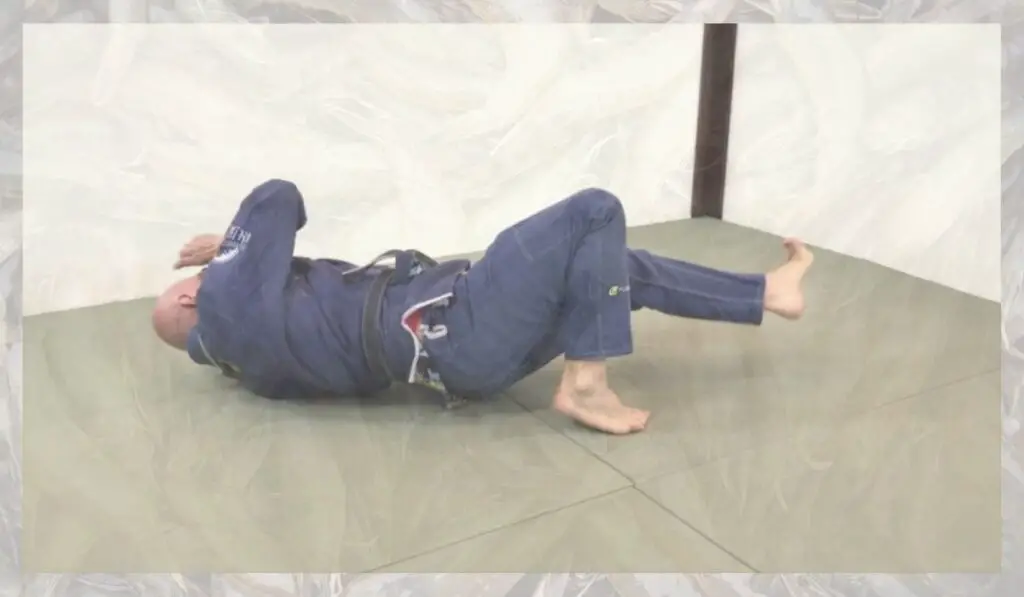Every jiu-jitsu practitioner with short legs aspires to develop a formidable guard game that will enable him to defeat many different opponents. Great guards assist practitioners in diversifying their game by including a variety of transitions and submissions. Unfortunately, many Brazilian jiu-jitsu fighters with short legs struggle to establish a challenging guard game.
Along with the de la Riva, other guards may be used to build a devastating game for short-legged players, such as the X guard, half guard, and butterfly guard.
If you’re a jiu-jitsu practitioner with short legs, we’ve compiled an incredible collection of BJJ guards to help you achieve your goals. Have a great time!
X Guard
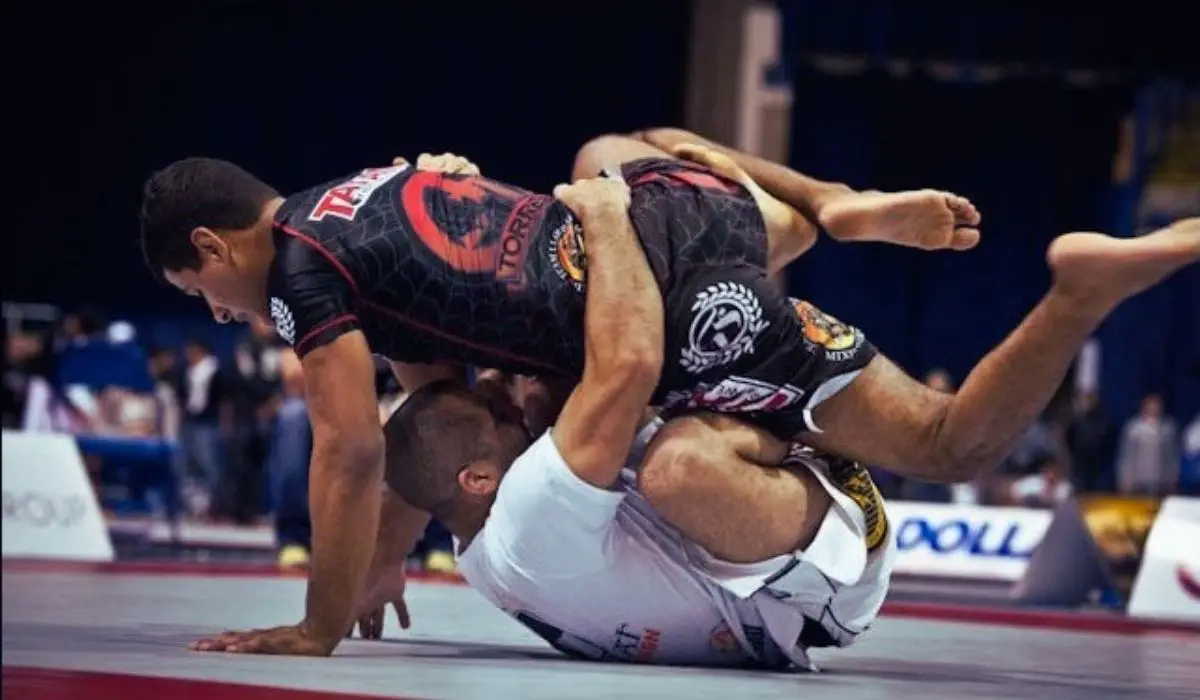
The X guard is one of the best guards for short legs in Brazilian jiu-jitsu. However, it is one of the most challenging guard types to master in jiu-jitsu grappling. Therefore, several fighters find several problems playing it. Yet, if you don’t have issues, the X guard will open your door to various submissions, sweeps, and transitions.
What does the X-guard stand for in the art of jiu-jitsu? The X-guard occurs when the bottom Brazilian jiu-jitsu player is underneath his opponent, and he’s using both his legs to control him. Otherwise, the X-guard bottom player’s legs are set up in a way that forms an X shape. For example, the bottom player will use one of his hands to control the nearby opponent’s knee. Moreover, he’ll use both legs to set up two hooks on the far opponent’s leg, forming an ‘X’ shape.
How do I enter the X-guard? You may enter the X guard from a bottom position beneath your opponent’s feet. In addition to the single leg X guard, butterfly guard, De La Riva guard, and other variations, there are several X guard entries that you should try.
What can you do from the bottom X guard? The X guard makes many powerful submissions, sweeps, and transitions available to the bottom player. In addition to the heel hook, the X guard can deliver kneebars, armbars, and other incredible submissions and sweeps.
What can you do from the top X guard? The top X guard player has a few options since the bottom player will attack his base and unbalance him. Thus, when at the top X guard position, you should first fix your balance issues and try to escape this position because it isn’t advantageous by any means.
Butterfly Guard
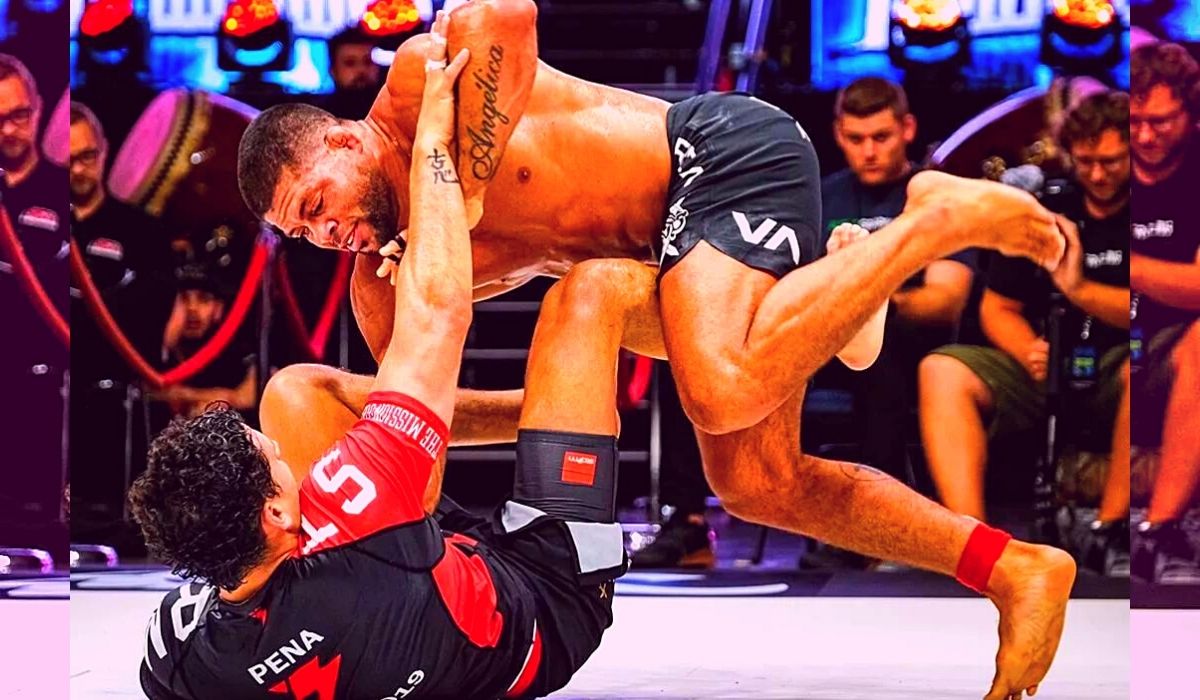
The butterfly guard is another excellent jiu-jitsu guard for short legs practitioners. Indeed, it’s an adequate guard in Gi and Nogi Jiu-Jitsu, primarily used as a sweeping position. So, many competitors, like Marcelo Garcia, have tried out this guard type to set up some great sweeps and submissions.
Furthermore, the butterfly guard is a dynamic position used by numerous fighters. For example, Marcelo Garcia, Jean Jacques Machado, Renzo Gracie, Nino Schembri, Leonardo Santos, and others have tested the efficiency of the butterfly guard in the top competitions.
What does the butterfly guard stand for in the art of BJJ? The butterfly guard is fundamental because it requires the player to be set in an open guard stance. Then, he will utilize his shins and legs to use hooks to control his opponent, with the legs forming the shape of a butterfly.
What has the butterfly guard to offer? The butterfly guard is a beautiful position used in Gi and No-Gi grappling to achieve many sweeps and submissions. For example, the guillotine choke, triangle choke, armbars, leg locks, and kneebars are butterfly guard submissions. Otherwise, when it comes to sweeping the shoulder crunch sumi gaeshi is one of the butterfly guard sweeps.
How to enter the butterfly guard? A wise jiu-jitsu practitioner can enter the butterfly guard from several positions, including the closed guard, half guard, and rubber guard.
Related: I’ve published a comprehensive BJJ post on the butterfly guard. Undoubtedly, it will give you a better understanding of this tremendous Brazilian jiu-jitsu guard position (Discover it Here).
Half Guard
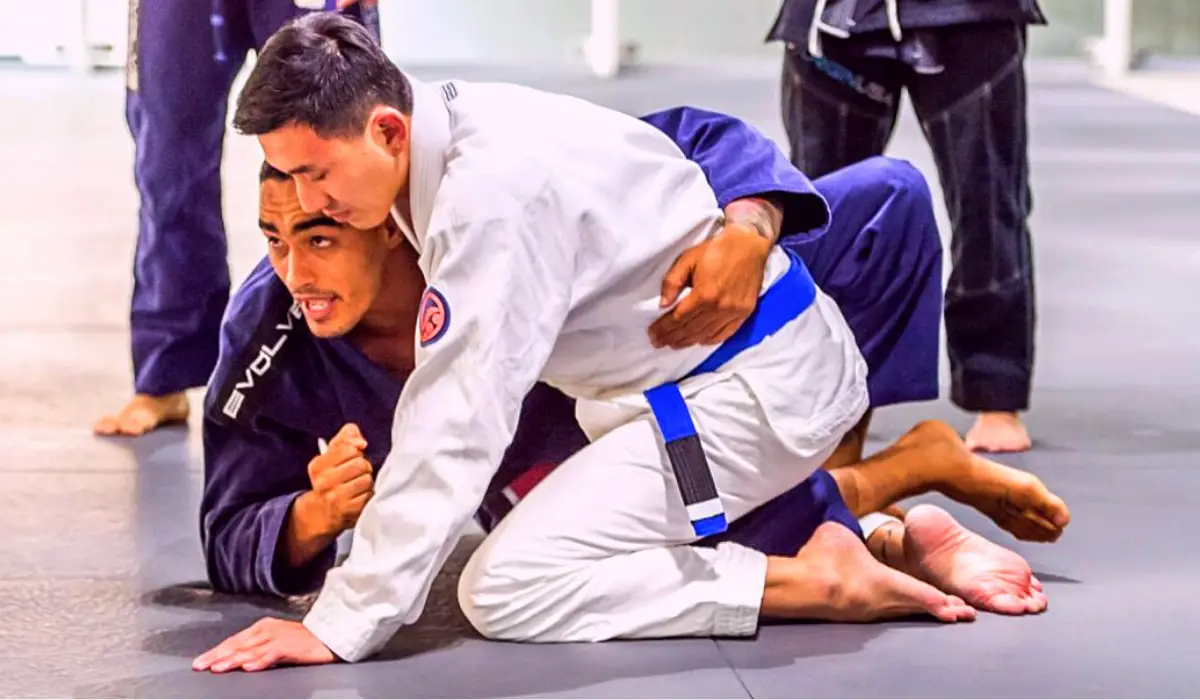
The half-guard is another significant BJJ guard for short legs guys. Indeed, it’s a versatile position In Brazilian jiu-jitsu grappling. Moreover, it’s an awesome startup for many wise fighters because it gives them a variety of submissions, sweeps, and transitions.
Therefore, the half guard is one of the fundamental guards that every student of Brazilian jiu-jitsu should be familiar with, both from the bottom and top positions.
What does the half guard stand for in the art of jiu-jitsu? The half guard is one of the most fundamental Brazilian jiu-jitsu positions. The bottom player places one of his legs between the top player’s legs. And, the other leg may be used as a knee shield throughout the opponent’s chest to block him.
What do you need to do from the bottom half guard player? First, the bottom fighter will utilize his legs and hands to control his opponent or create space. Therefore, get out of the bottom half guard position because staying there is not helpful.
Depending on the situation, the bottom player will search first for a sweep from the half guard. And, if things do not go well, he’ll try to move to another advantageous position, such as the deep half guard, half-butterfly guard, Z guard, X guard, etc.
What do you need to do from the top half guard? The top half guard player will attempt to push the bottom half guard player to the mat by utilizing his hands and upper body to force him to the mat. Afterward, he’ll try to break his opponent’s legs and get past the guards. In addition, if he arrives to create a rigid control, the top half guard player may acquire incredible submissions like the kimura lock, Americana, etc.
I’ve written a full BJJ article about the half guard, which you can find here. Undoubtedly, it’ll help you better understand this incredible Brazilian jiu-jitsu guard position.
De La Riva Guard
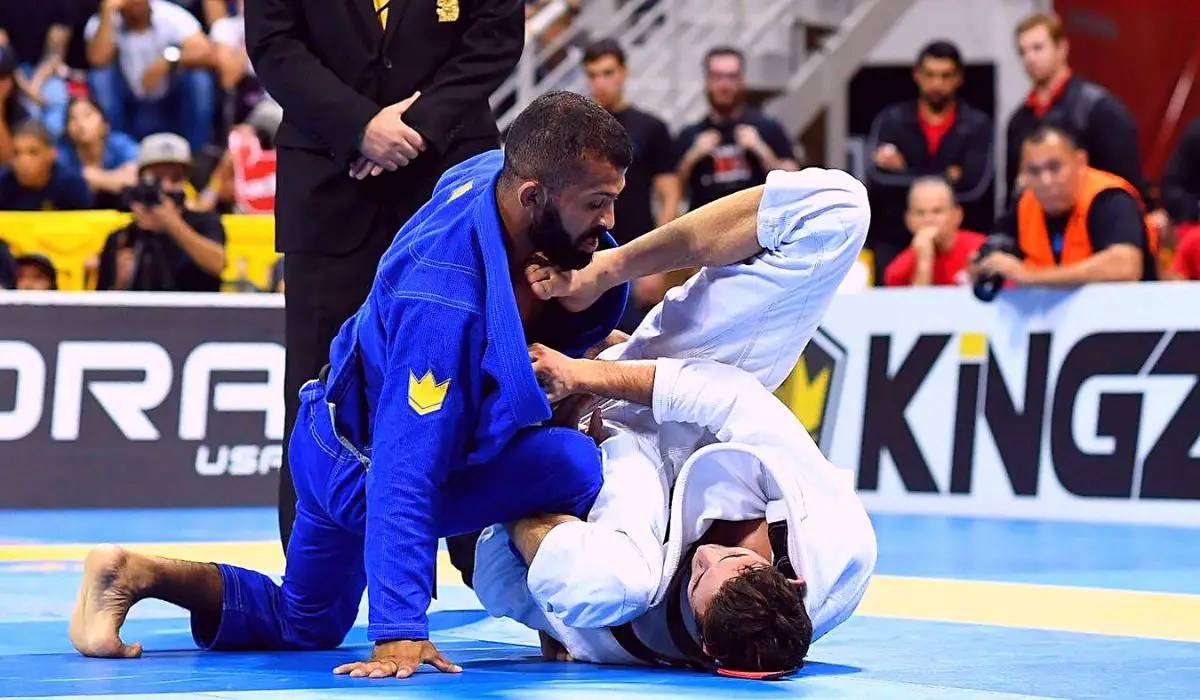
De La Riva (DLR) is another fantastic BJJ guard for short-legged players. It’s a great control often used in Gi and No-Gi jiu-jitsu. Therefore, many practitioners primarily use this guard position in Brazilian jiu-jitsu.
What does De La Riva guard mean in the art of jiu-jitsu? The De La Riva guard is done when the bottom player catches the top player’s front leg from the outside using his leg. Indeed, he’ll use his other leg to block the other opponent’s leg near the knee. At the same time, the bottom player will grip the opponent’s pants on the same side of the hooked leg.
What does De La Riva guard offer? The Dela Riva guard can offer its players a variety of sweeps, submissions, and transitions. In addition to the hook sweep, there are many other sweeps from DLR that you can try.
Regarding submissions, the DLR can serve you with many, like the omoplata, triangle choke, etc. Otherwise, the DLR can offer a variety of transitions, including the single-leg X, X guard, Z guard, back control, and others.
Related: The DeLa Riva is one of the best guards in Brazilian jiu-jitsu. This comprehensive article explains the BJJ DLR guard basics and offers effective attacks and sweeps to help you build a savage game.
Final Thoughts
In the art of jiu-jitsu, the guard is a critical position that shows your abilities on the mat. So, What are the best jiu-jitsu guards for short legs practitioners?
In addition to the De La Riva guard, there are diverse guards for short legs players to develop a brutal game, including the X guard, half guard, butterfly guard, etc. Thus, they will create a fantastic game with several attacks, sweeps, and transitions.
I hope the list above will assist you in locating the most appropriate guards for your needs. So, take them for a spin during your next BJJ training session and see the difference for yourself!
Aside from that, certain BJJ guard types are more effective against standing opponents. In contrast, others are more lethal versus kneeling opponents.
Express yourself; what do you think about the short legs guys guards listed above? Should I include or exclude any guard from this list?
Related: Some guards may be performed with or without a gi; several are particularly well suited to the no-gi grappling style. If you need more help, I’ve published a whole BJJ post on the different types of BJJ guards, which you may find it here.


